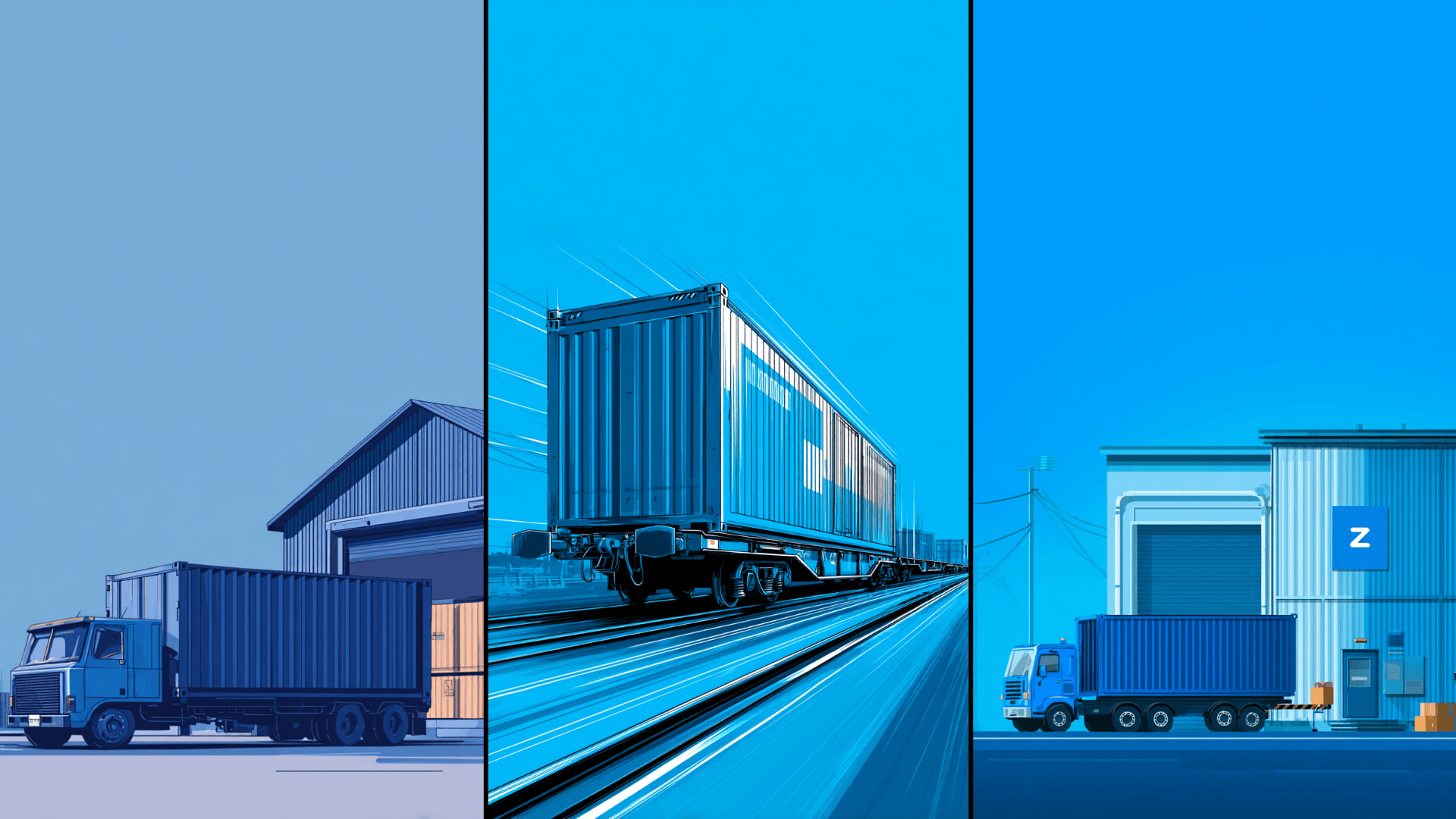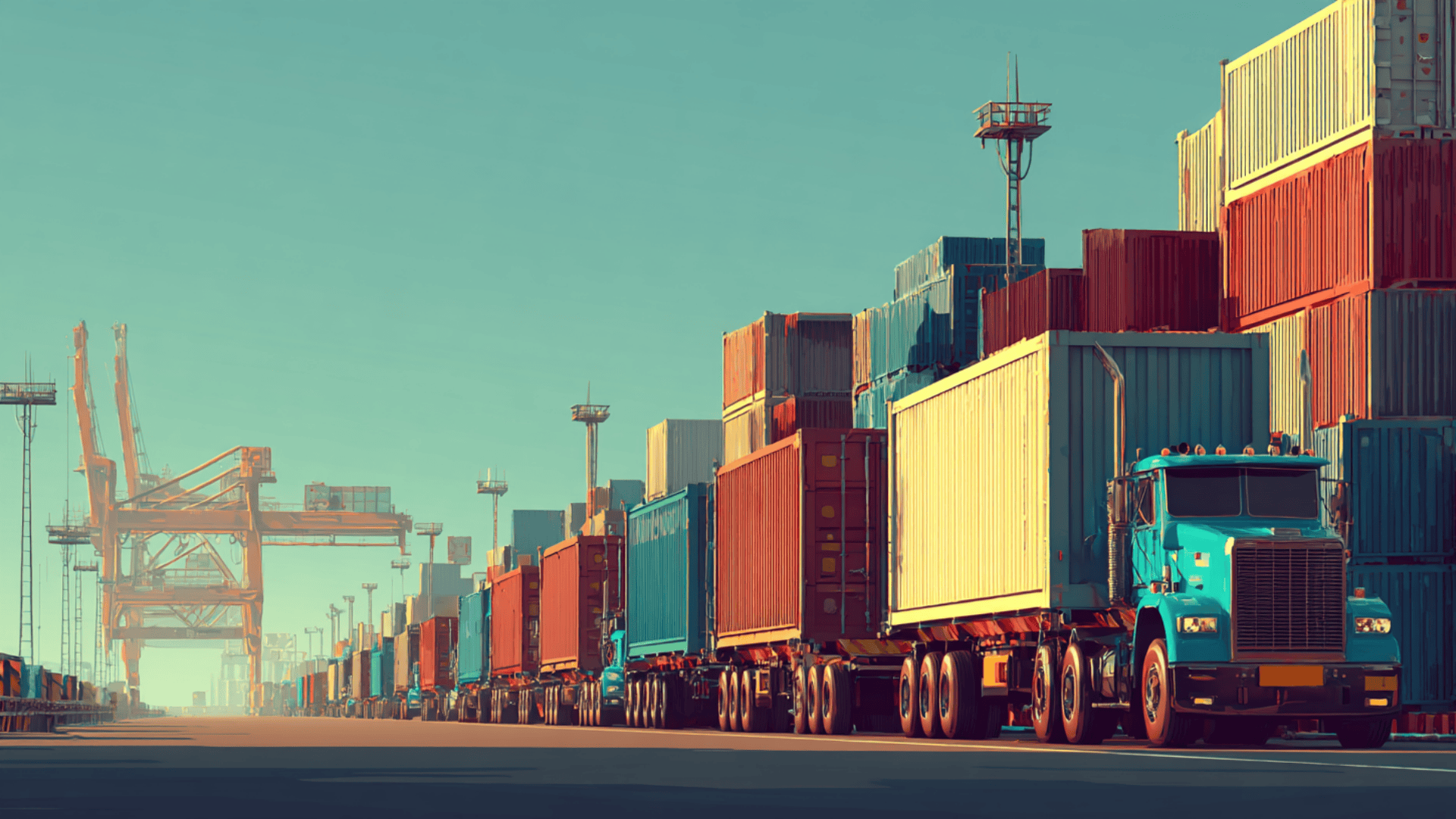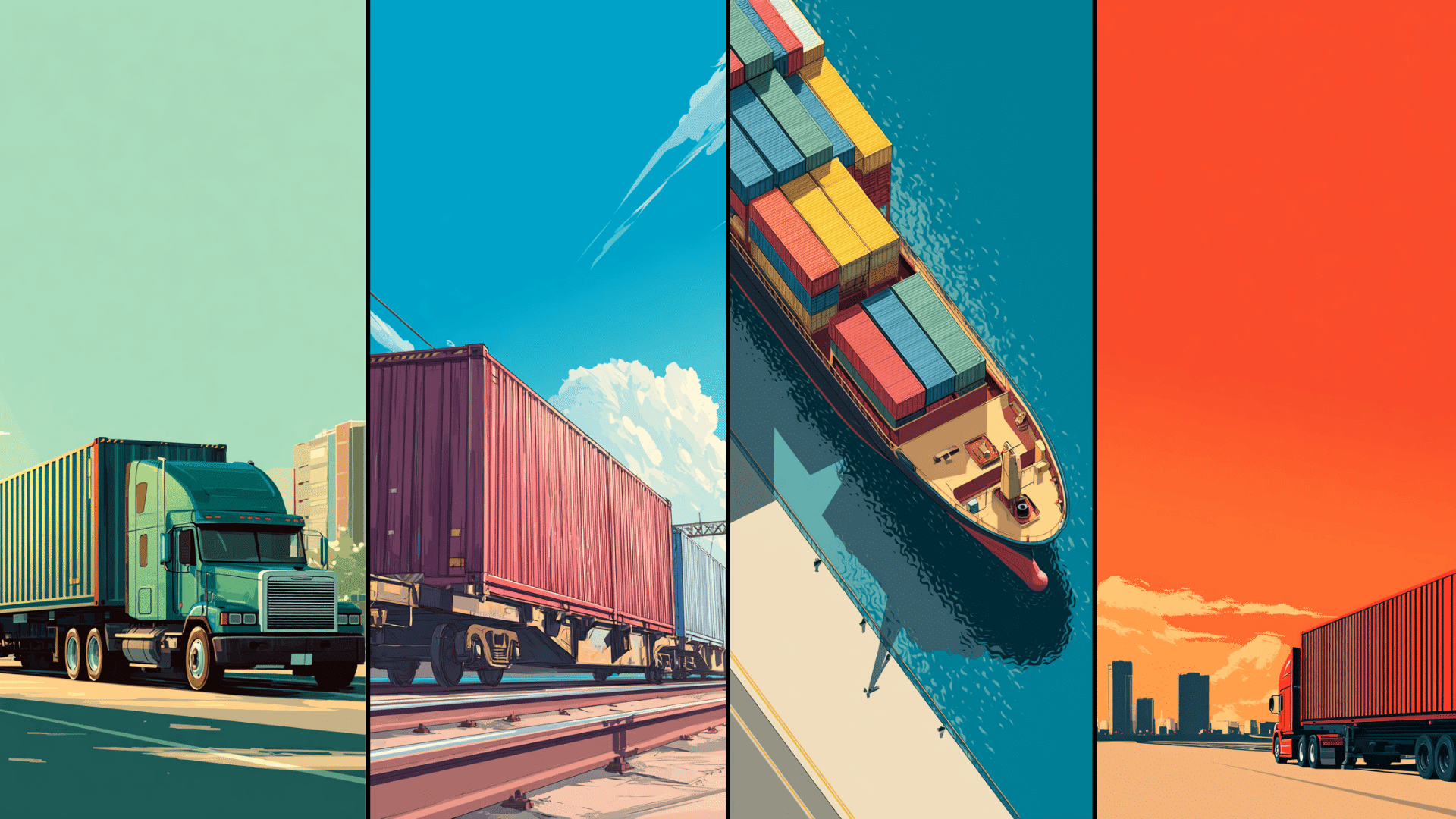Moving goods across the country takes more than just trucks. Today, businesses rely on creative ways to connect different modes of transport so products can travel farther, faster, and at lower cost.
That’s where intermodal trucking comes in. I know, it may sound like a niche piece of logistics, but it’s actually one of the most important links in modern supply chains.
What makes it interesting is how it combines local and global movement. Containers can ride trains or ships for thousands of miles, then depend on trucks to complete the final stretch.
This mix creates new opportunities and challenges for shippers, drivers, and businesses alike. To understand how it all works, let’s start with the basics.
What is Intermodal Trucking?
Intermodal trucking is the part of shipping where trucks move containers between different points in the route. Think of it as the “first mile” and “last mile” of intermodal transport.
A truck might pick up a loaded container from a factory and take it to a rail ramp or port. Later, another truck delivers that same container from the hub to the final customer.
This short-haul work is called drayage. I’ve noticed it’s one of those terms that sounds complicated, but really it just means connecting trucks with other transport modes.
Intermodal trucking is what makes the whole system work. Without it, containers couldn’t move easily between ships, trains, and warehouses. It’s the link that ties the full intermodal network together.
How Intermodal Trucking Works

Intermodal trucking is the connector that makes different modes of transport work together. The long-haul leg might be handled by rail or ship, but it’s trucks that get containers where they need to be at both ends.
Here’s a closer look at each step:
Step 1: Shipper to Hub (Port or Rail Ramp)
The process starts with a truck picking up a loaded container from the shipper, like a factory or warehouse.
The driver places the container on a chassis, which is a special trailer frame built to carry containers securely. From there, the truck hauls it to the nearest port or rail terminal.
This short haul is called drayage, and it’s what links local shippers to larger transport networks.
Step 2: Long-Haul by Rail or Ship
Once the container reaches the hub, it’s transferred onto a train or ship for the long-distance move. This is where intermodal transport really shines.
The cargo stays sealed inside the same container; it’s never unpacked and reloaded. That means less handling, fewer chances of damage, and more security for the shipment.
Trains often carry dozens of containers at once, while ships can move thousands across oceans, making this stage efficient for bulk moves.
Step 3: Hub to Final Destination
At the destination port or rail ramp, another truck takes over. The driver picks up the same container on a chassis and delivers it directly to the final receiver, whether that’s a warehouse, distribution center, or retailer. This last drayage leg ensures true door-to-door delivery.
The entire system works because of Standardized containers. Since containers are designed to fit ships, trains, and trucks, they move seamlessly between modes without unpacking. This flexibility is what makes intermodal trucking such a practical solution for modern supply chains.
Key Benefits of Intermodal Trucking
I’ve found that the biggest reason businesses turn to intermodal trucking is the mix of savings and reliability it brings. Trucks alone can’t always deliver the same balance of cost, speed, and reach.
- Cost savings: Rail and ship transport are usually cheaper for long-distance hauls, especially when fuel prices climb. By combining these modes with trucks, shippers cut down on expenses without sacrificing delivery.
- Efficiency and scalability: Intermodal moves large volumes of freight with less effort. A single train can carry hundreds of containers at once, making it easy to scale up when demand spikes. Trucks then step in for local pickups and final deliveries.
- Environmental impact: Trains and ships burn less fuel per container compared to trucks on long routes. Using them reduces emissions and fuel consumption, which is becoming more important as companies focus on greener supply chains.
- Supply chain reliability: Because containers stay sealed the whole trip, there’s less handling and fewer chances for damage or loss. This gives businesses more confidence in delivery times, especially when moving freight across long distances.
That’s why intermodal trucking stands out. It saves money, runs efficiently, and keeps freight moving with fewer risks along the way.
Common Challenges in Intermodal Trucking

Intermodal trucking keeps freight moving, but it’s not without roadblocks. I know how these issues can disrupt schedules and raise costs, but they can be managed with the right troubleshooting.
1. Port and Rail Wait Times
One of the biggest frustrations is the time drivers spend waiting at ports or rail ramps. A simple pickup can turn into hours of delay, especially during peak seasons.
To reduce this, many shippers schedule appointments where available or monitor live updates from terminals. Planning pickups outside of rush hours also helps drivers spend less time idling and more time moving freight.
2. Chassis and Container Shortages
A container is useless without the right chassis, and shortages are a common headache.
I’ve seen some companies get around this by leasing their own chassis or working with providers that have access to larger shared pools. Inspecting equipment early also prevents last-minute surprises that stall deliveries.
3. Long Hours for Drivers
Intermodal drivers may not haul cross-country, but long, unpredictable days are still part of the job. Wait times, multiple stops, and strict terminal schedules all stretch shifts.
Troubleshooting this often comes down to better planning, building in buffer time, keeping communication open between dispatch and drivers, and setting realistic schedules that avoid burnout.
4. Coordination Between Modes
Getting trucks, trains, and ships aligned on one schedule is tricky. A late train or a missed ship connection can throw everything off.
The fix usually comes from strong partnerships and digital tools that give visibility across all modes.
When everyone in the chain shares real-time updates, delays are easier to work around before they become major setbacks.
Intermodal vs. Over-the-Road (OTR) Trucking
Shippers often compare intermodal with traditional over-the-road trucking to decide which works best. Each option has unique trade-offs in cost, speed, complexity, and driver lifestyle.
| Factor | Intermodal Shipping | Over-the-Road (OTR) Trucking |
|---|---|---|
| Cost | Cheaper per mile on long hauls, especially when fuel prices rise | More practical and cost-effective for shorter routes |
| Speed | Slower due to transfers at rail hubs or ports | Faster since freight stays with one truck the entire way |
| Complexity | Higher, with multiple handoffs and transfers | Lower, with direct point-to-point delivery |
| Driver Lifestyle | Often local or regional routes, more home time but long/unpredictable shifts | Longer trips, drivers can be away for days or weeks at a time |
Intermodal works best for long hauls and large, consistent volumes since rail and ship networks move freight efficiently at lower cost. Reliability is strong, though transit takes longer.
OTR is better for time-sensitive or short routes, offering direct delivery without transfer delays. Companies often choose OTR when speed is more important than cost savings.
Careers in Intermodal Trucking
Intermodal trucking careers focus on moving containers to and from rail ramps, ports, and customer facilities.
Drivers don’t handle freight directly. The containers stay sealed, so the role is more about coordinating pickups and drop-offs than loading or unloading.
The work environment often feels structured but busy. Drivers may make several shorter trips in a day instead of one long haul, which keeps routes local or regional. That setup appeals to people who prefer familiar roads and a steadier routine.
Earnings depend on the carrier and region, but many intermodal jobs are paid per move, which rewards efficiency. Hours can be long, yet the chance to return home most nights is a draw for many drivers.
Compared with OTR, intermodal offers more stability and home time but less variety in scenery and routes. It’s a trade-off that works well for drivers who value consistency and a work-life balance that OTR can’t always provide.
Intermodal Trucking in Today’s Supply Chain
Intermodal trucking has become a central piece of how goods move across regions. Businesses lean on it because it blends cost savings with flexibility.
By combining rail or ship for long hauls and trucks for local moves, companies can serve wider markets without overspending.
Rail partnerships are also growing. I’ve seen more shippers turn to rail as fuel prices climb and road congestion worsens.
Trains move large volumes efficiently, and intermodal trucking provides the connection needed to make rail a practical option for everyday freight.
There’s also a clear environmental and economic side. Rail and ships burn less fuel per container than long-haul trucks, which cuts emissions and supports sustainability goals.
For businesses, it’s not just greener; it’s often cheaper, too.
Wrapping Up
I’ve found that intermodal trucking isn’t just about saving money or cutting emissions; it’s about flexibility.
When markets shift or disruptions hit, the ability to adjust routes and volumes without overhauling everything keeps freight moving.
You can see how this gives businesses more stability, while drivers and carriers benefit from steadier work. It’s the mix of adaptability and reliability that makes intermodal so valuable in today’s supply chain.
If you want to learn more about how freight and logistics work in practice, check out my other blogs. You’ll find more useful insights to help you understand the systems that keep goods moving.















